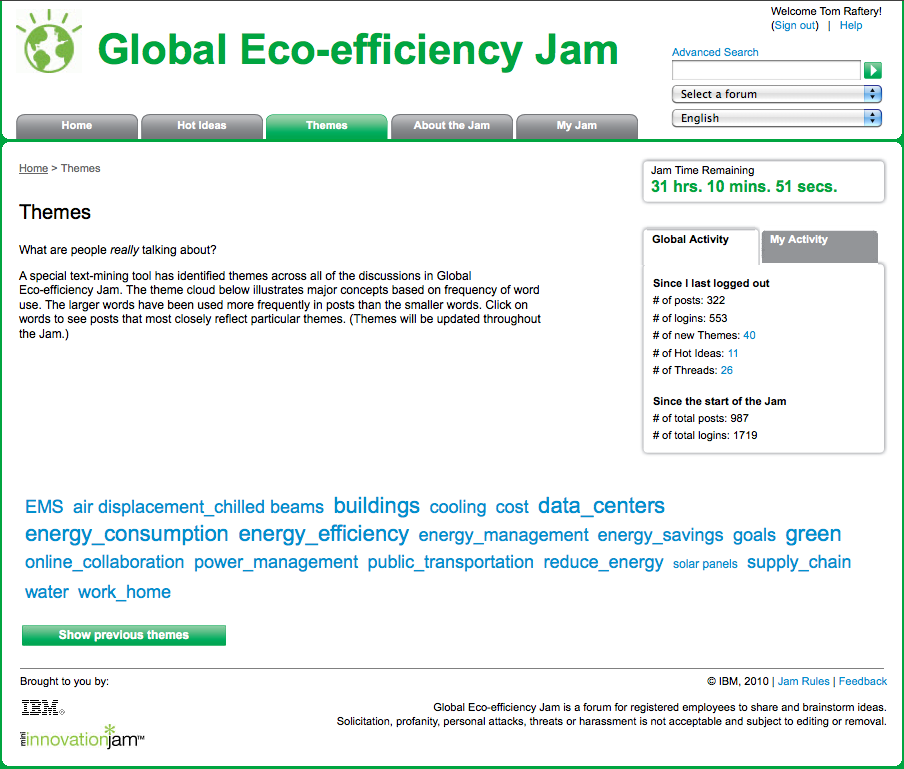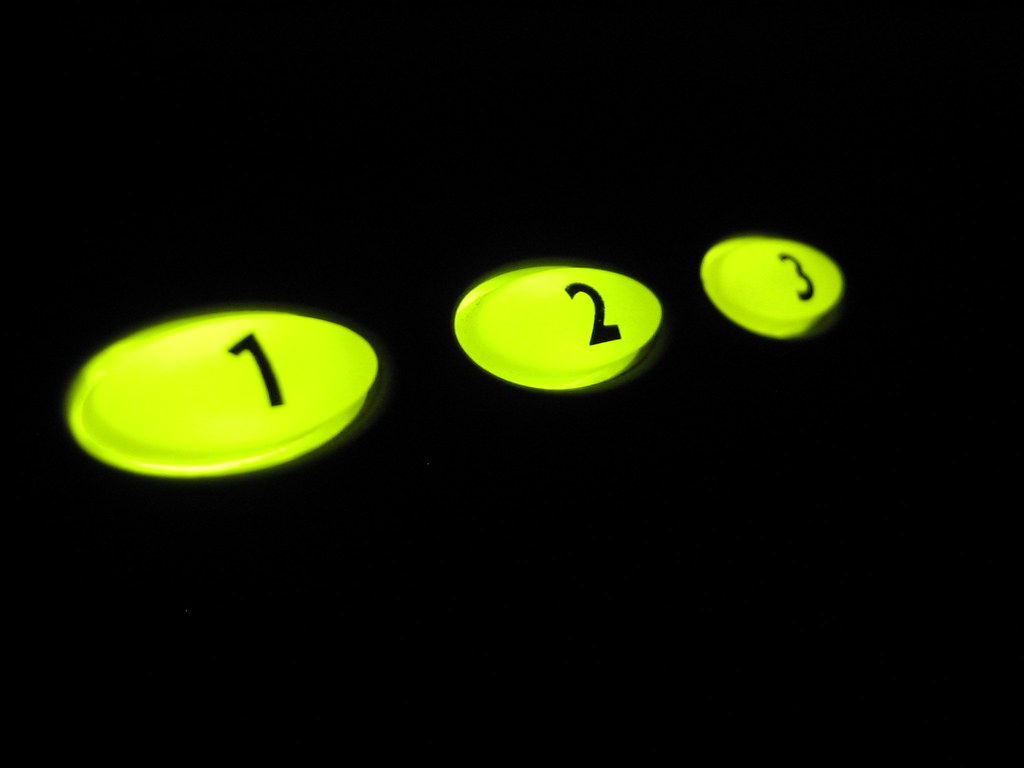Well, the IBM Global Eco Jam has been underway nearly 24 hours at this point – how is it going?
It has been incredibly active, I have to say. You can see from the screenshot I took earlier this morning that the number of posts was 987 at that point – I just checked now and the number has gone up to 1037! These are across many themes ranging, as you can see in the tag cloud above, from solar panels, through to energy efficiency and buildings.
I have been involved in some terrific discussions on KPI’s, the merits of aisle containment in data centers, the red herring that is phone charger unplugging and reasonably heated discussion on the place of IT in energy management in organisations!
What has really impressed me is the level of expertise of all the participants (except those arguing with me about the role of IT in Energy management 😉 ) and the amount of time people are dedicating to it. Many of the participants have contributed north of 10 posts.
This really is an international gathering of incredible energy mavens, selflessly collaborating (and simultaneously learning) for everyone’s mutual benefit.
It is amazing to be allowed to be part of such an event.
Btw, if you want to take part and your organization’s name is not listed, request an invitation by sending an e-mail to [email protected] with “RSVP” in the subject line.






